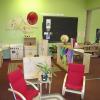- Define and describe “developmentally appropriate” materials.
- Recognize characteristics that make toys and materials interesting or relevant to children.
- Choose toys and materials that reflect a variety of backgrounds, interests, and learning goals.
Learn
Know
When you entered your classroom for the first time, you were likely overwhelmed by the task of setting it up for children. Perhaps it was already full of toys, books, and materials. You may have found yourself in a cycle of sorting and storing. Perhaps the materials are old and you have the opportunity to shop for replacements. Regardless of your situation, how do you decide what toys and materials to include in your classroom?
When choosing materials, look for toys and materials that are:
- Authentic and meaningful
- Developmentally appropriate
- Linked to children’s interests
- Varied in possibilities
- Linked to learning goals
Authentic and Meaningful
Materials in a preschool classroom should be authentic and connected to real-life experiences. Authentic materials are not specifically designed for educational purposes but rather they are objects that young children experience and interact with in everyday life. Real-life materials allow children to explore, discover, and play in many different ways. The materials that you choose should reflect the backgrounds, community, and experiences of all children. By choosing authentic, real-life materials for children to explore, you will build a bridge between children’s home and school lives that will provide a strong foundation for learning. Including artifacts and natural objects from the local community or neighborhood in your learning environment offers opportunities for children to experience and understand their immediate world.
Children should be exposed to items that are beautiful, ignite curiosity and engagement, and invite connections to their backgrounds and community. This includes providing materials that send positive, inclusive messages about individuals with disabilities.
There are many ways to include authentic and meaningful materials in the preschool environment including:
- Add real-life kitchen materials or cooking items into the dramatic play area (i.e., a muffin tin, spoons, and small cups).
- Offer some materials in natural baskets instead of plastic bins
- Include items that represent backgrounds and traditions from around the world (cookbooks with pictures of foods, menus from a variety of restaurants, fabrics, cooking utensils, traditional clothing).
- Ask family members to lend you items from their homes.
- Provide figurines or dolls that represent people of various backgrounds and abilities in the block or dramatic play area.
- Offer musical instruments from around the globe and recorded traditional and contemporary music.
- Display pictures that represent all children and families.
- Add recycled materials such as boxes, paper towel rolls, and egg cartons to the manipulative or building area.
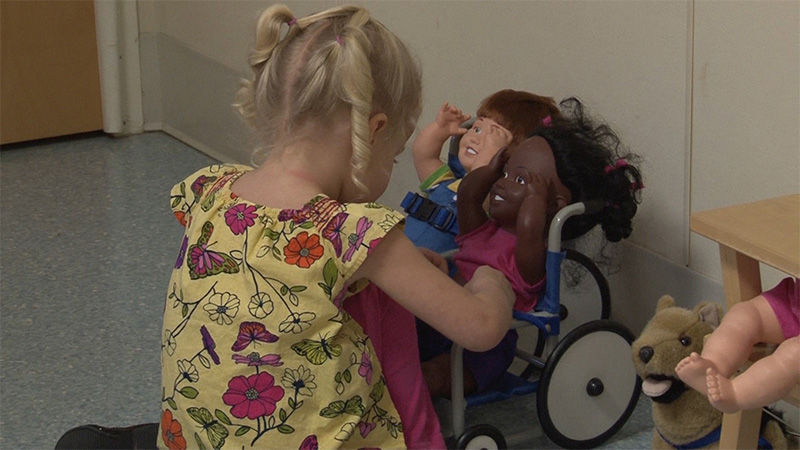
Above all, remember to engage families in making your classroom a relevant and meaningful space. Display framed pictures of families and create family books with the children. Encourage family members to share their home language and to help you label items in the classroom with words from that language.
Developmentally Appropriate
Toys and materials in your classroom should be developmentally appropriate. This means they should match the stage of development and ability of the children in your care. Because children develop at different rates, choosing developmentally appropriate materials means you should have a range of toys and materials available that can accommodate differences between individual children’s skills, interests, and characteristics. A classroom stocked with developmentally appropriate materials “fits” the child—the child should not have to adjust to “fit” the classroom!
Between the ages of 3 and 5, children’s brains and bodies continue to develop. You will learn more about this in the Cognitive Development and Physical Development courses. Developmentally appropriate items allow preschoolers to experiment, engage, and solve problems. Materials can encourage children to play with others, take turns, and share. Preschool children also need toys and materials that let them move their bodies and that promote physical development.
When considering developmentally appropriate materials, be sure to include the creative arts. These might be materials that you plan to offer with certain interest ideas, or ones that you plan to use with small group or individual activities. These items can include crayons, markers, paints, dot markers, paintbrushes, sponges, etc. Make sure that you plan for time and space when offering these materials. All materials should be safe and non-toxic. You can learn more about incorporating art into your preschool classroom in the Creative Expression course.
Examples of developmentally appropriate materials for preschool-aged children include:
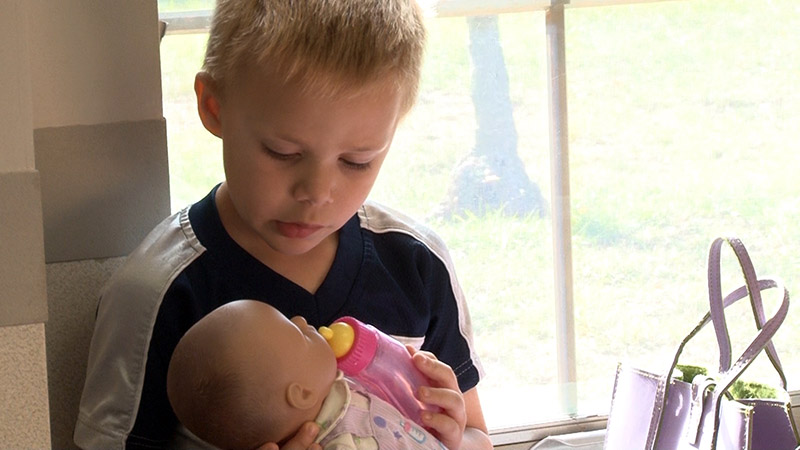
- Wooden and magnetic blocks for building
- Baby dolls
- Balls of various shapes and sizes
- Floor puzzles with large pieces
- Simple games that require no reading and few pieces (e.g., Chutes and Ladders)
As you learned in the Safe Environments course, you should also ensure the materials you provide are safe. All materials in your classroom should be made for preschool-aged children. Make sure your classroom is free of toxic materials (e.g., plants, art supplies, natural materials). Carefully supervise materials that could be difficult for developmentally younger children.
As part of selecting developmentally appropriate materials, you also want to ensure that the developmental needs of all learners are considered. Some children, such as those with social-emotional or attention needs may benefit from small comfort items, often referred to as fidgets, to help them release energy . Examples of fidgets include:
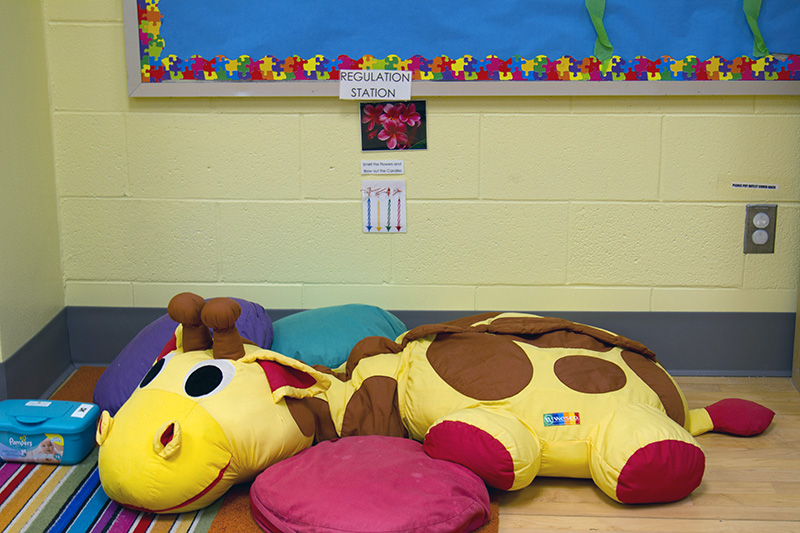
- Pieces of felt
- Small bean bags
- Small plush toys
- Pipe cleaners
- Squishy balls
- Bendy material
Fidgets can be great items to include in your “cool down” area or other quiet and calming spaces in your classroom, as they can help with self-soothing. For some children, fidgets can also be helpful during group meeting time, as they offer a release of energy in a quiet, nondisruptive way, which helps children to focus more easily on the experience at hand. Just ensure that the children understand the proper use of fidgets and comfort items (you may have to explain or demonstrate what they are for, and they are to remain in one’s lap).
Linked to Children’s Interests
Children learn best when adults incorporate their interests. Whenever possible, adults should provide materials that capture children’s interests and extend their learning. For example, if a few children are very interested in construction equipment during the summer months, the teacher could turn the sensory table, block area, or a portion of the playground into a construction zone. Providing hard hats, shovels, measuring tools, gravel, or toy construction equipment can help spark children’s imaginations. If children are interested in fairy tales, this would be a good opportunity to stock the dress-up area with fancy outfits and wands, and to include fairy tale books in the library area. You could even offer recycled materials in the art area for children to construct their own fairy tale castles or forts.
Perhaps a child had their first airplane trip recently, and airplanes and flying have become an interest to other children as well. To capture this interest and extend children’s learning in this area, you could do one or more of the following things:
- Read and display books about airplanes in the library.
- Set up the art area to allow children to construct their own “planes,” which they could experiment with “flying” in the discovery area.
- Make an “airport” area in the dramatic play space with appropriate materials and props (e.g., scarves, pilot hats, uniform pieces, plastic cups and food, large boxes that can be used as airplanes, small pieces of luggage, etc.).
By incorporating children’s interests when choosing classroom materials, you can help children make connections that extend their learning to new areas. For example, the creation of a “construction zone” might spark children’s interest in learning about bridges, which could lead to discussions about the ocean or types of transportation that move through water. Supporting children’s interest in fairy tales could lead to a discussion about magic, which could prompt some children to become interested in magic shows or simple magic tricks. Or children might become interested in creating their own fairy tale stories (oral or written) with the help of a teacher. As discussed in Lesson Two, provocations are a great way to incorporate children’s interests and help guide children’s play in productive, engaging ways.
To support preschoolers’ interests, remember to rotate toys and materials as their ideas evolve. Materials should reflect the current interests of the children, the developmental skill levels, and serve as a provocation for extending their learning. When an item is no longer being used, it becomes a source of frustration, or if it does not reflect the children’s interest, swap it for something new. You can also change the type, amount, or placement of materials to give the children a new perspective on their ideas. For example, you can offer different sizes, shades, or types of crayons, or you can try removing the wrapper for a different sensory experience.
Varied Toys and Activities
Not all toys are created equal. Some toys spark imagination and some hinder it. You might have noticed that young children are often more interested in the box than the toy that came inside of it. Why? Because the box can become anything. It becomes a drum when you hit it, a house when you put a doll inside it, a hat when you put it on your head, and a mask when you play hide and seek behind it. The possibilities are endless. Children learn and explore more when a toy is only limited by their imaginations. Consider the following list and think about why toys spark or limit imaginative play.
Toys that may limit imaginative play:
- Action figures or plastic dolls with preset accessories or movements
- Toys that talk, sing, or dance
- Toys that are branded, such as with a TV show or popular character
- Work books or sticker books
- Art activities with a clear product
Toys that spark imaginative play:
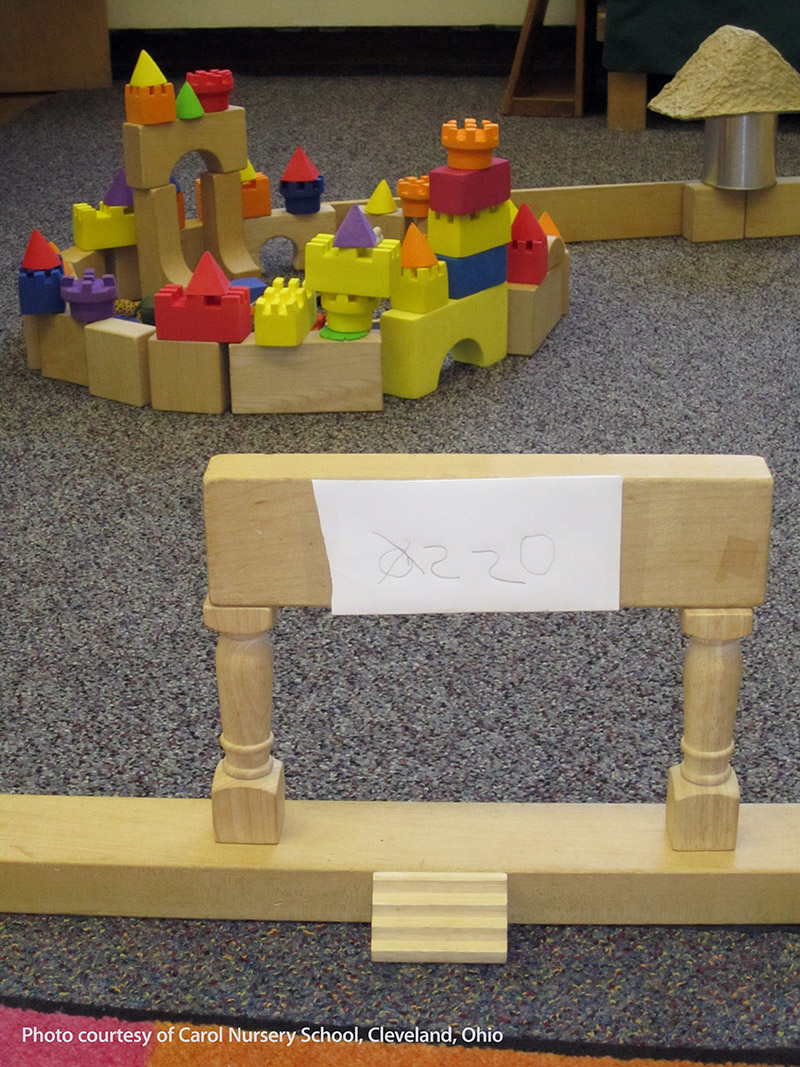
- Dress-up clothes
- Large or small boxes
- Tools and items a child might find in the home
- Baby dolls
- Musical instruments
- Arts and crafts materials
- Items that are open-ended and can be used in a variety of different ways (e.g., blocks)
Linked to Learning Goals
It is perhaps most important to think about why you have selected the materials in your room. Ask yourself: how will this item help children learn? Use your knowledge of learning standards and the guidelines outlined by your curriculum to shape your classroom decisions. Look for toys that promote math skills like sorting and patterning, literacy skills like letter matching and rhyming, social skills like turn-taking and problem solving, and scientific knowledge. Think about the ways you can engage with each individual to enhance the experience. What ways can the responsive language you use promote the cognitive understanding of the world around them?
Here are some examples of materials that address common learning goals:
Math Skills
- Dice
- Measuring tape
- Calendars
- Pattern or unit blocks
Literacy Skills
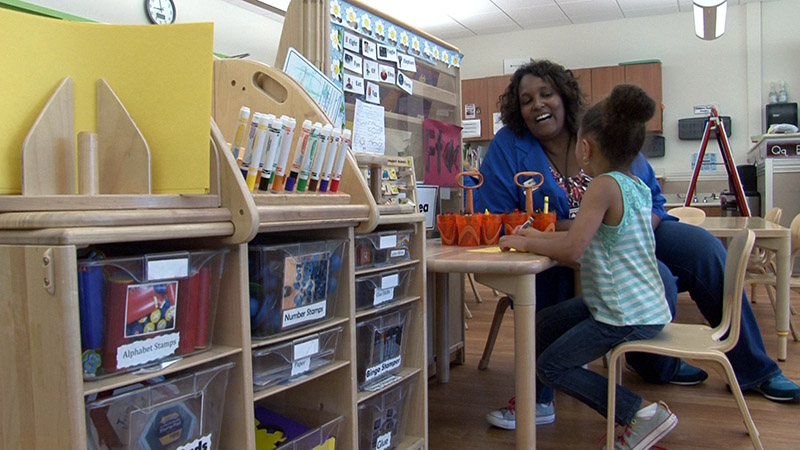
- Alphabet magnets, beads, stamps, blocks
- Variety of writing tools and surfaces
- Variety of print materials
- Puppets
Social Skills
- Simple cooperative board games (e.g., Count Your Chickens)
- Cooperative movement games (e.g., wagon pull —children take turns pulling each other in wagons)
Scientific Knowledge
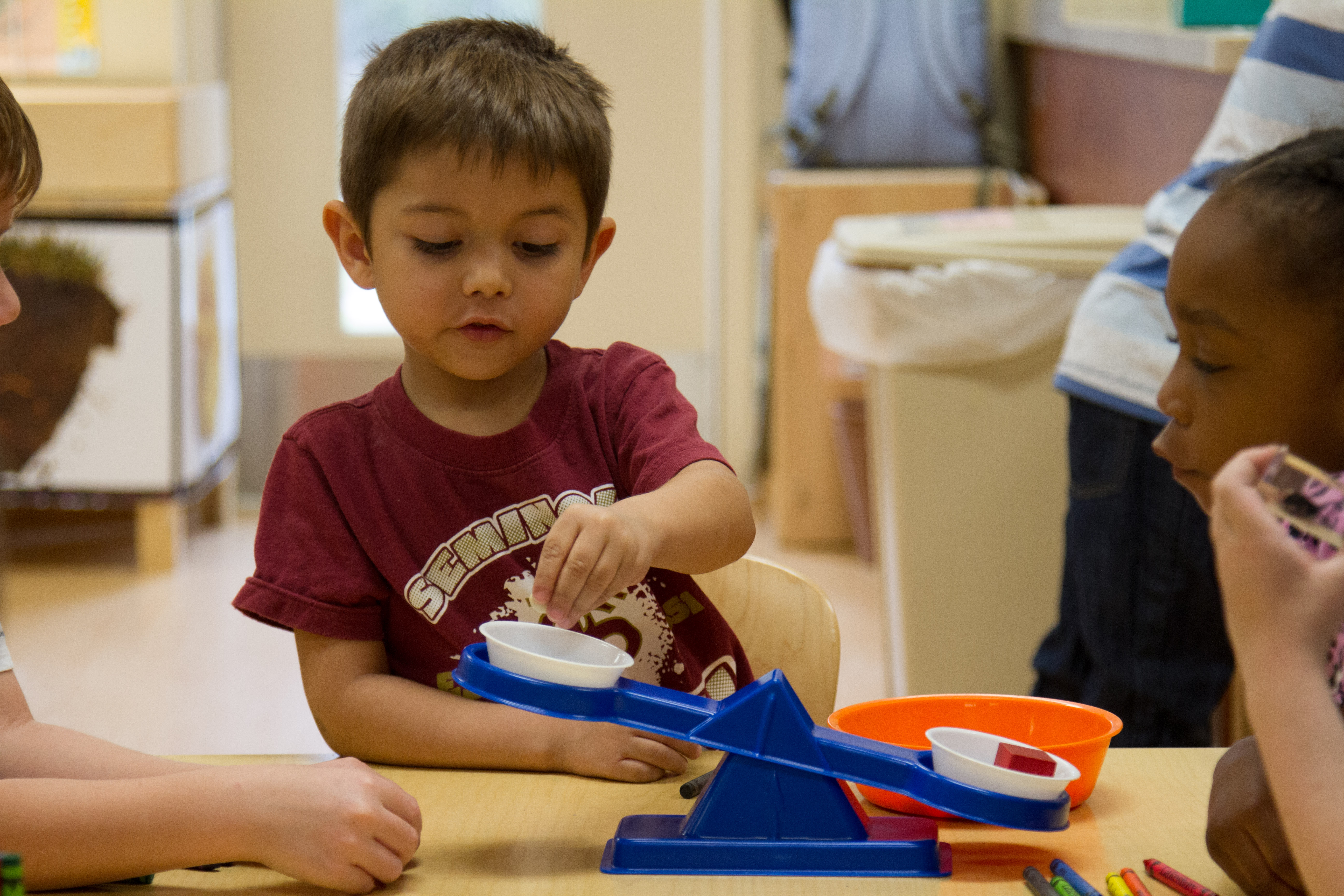
- Magnifying glass
- Magnets
- Interesting items from the natural environment
- Ramps and scales
Knowledge of the Social World
- Maps
- Play money and cash register
- Dramatic play items that relate to different occupations
Look for toys that address these important learning goals through play and games. The general rule is that children should want to play with and explore these materials. See the Explore and Apply sections for further examples of learning goals and materials that help address them.
See
Watch this video to see examples of toys and materials that promote learning.
Materials That Support Learning
Do
To help make the best choices for the children in your classroom, be sure to:
- Talk to a trainer, coach, or administrator about materials that are most appropriate for your classroom.
- Watch how children play with materials. Introduce new materials when children seem bored or when they need a new challenge. Try offering provocations (see the Indoor Environment lesson) to help children explore materials in a new or more focused way.
- Interact with children as they play. Talk about their ideas and encourage them to take the next step in their thinking. Ask open-ended questions (or questions without a right or wrong answer).
- Reflect on the materials in your classroom. If you notice any biased materials (e.g., books that only show male police officers), make a change.
- Ask families to get involved. Ask them to donate plastic jars, boxes, or other items for your art, block, or dramatic play area. Invite them to share traditions. Make sure that a trainer, coach, or administrator approves material donations for use in the classroom.
- Get creative. You do not have to buy materials for your classroom. Think about toys or recycled materials you can find or make with children.
Ask yourself the following questions about the materials in your program:
- Do these materials reflect the children’s current interests and help spark new interests?
- Do these materials allow children to play in a variety of ways?
- Do these materials help us reach important learning goals for children?
Explore
The materials you already have in your classroom are powerful tools for learning. As you watch these videos of everyday experiences in preschool classrooms, think about what the children are learning. Watch the video and complete the Child’s Play: Toys and Games activity while considering how different toys affect children’s play, learning, and development. Share your responses with a trainer, coach, or administrator. Then compare your answers to the suggested responses.
If you are a CDA candidate, you can use the CDA Competency Statement I handout to reflect on how you establish and maintain a safe, healthy learning environment. This is a required item for the CDA Professional Portfolio.
Apply
Print the Child’s Play: Toys for Learning Goals guide. This resource identifies developmentally appropriate toys for preschoolers. Use the guide to answer the reflective questions in the Child’s Play: Toys and Games for Learning Goals Reflection. Consider ways you can promote cooperation and learning in your classroom. Compare the materials from the videos earlier in this lesson and your classroom materials to the lists here. Talk to a trainer, coach, or administrator about how the materials in your classroom promote learning. For further suggestions regarding developmentally appropriate toys for preschoolers, see the References & Resources list.
Glossary
Demonstrate
Dodge, D. T., Heroman, C., Berke, K., Bickart, T., Colker, L., Jones, C., Copley, J., & Dighe, J. (2016). The creative curriculum for preschool (6th ed.). Teaching Strategies, Inc.
Dubosarsky, M., Murphy, B., Roehrig, G., Frost, L. C., Jones, J., & Carlson, S. P. (2011). Incorporating cultural themes to promote preschoolers’ critical thinking in American Indian head start classrooms. https://headstart.gov/sites/default/files/pdf/incorportaing-cultural-themes.pdf
Duncan, S., Martin, J. & Kreth, R. (2016). Rethinking the classroom landscape: Creating environments that connect young children, families, and communities. Gryphon House, Inc.
Gold, Z., Elicker, J., & Beaulieu, B. (2020). Learning engineering through block play: STEM in preschool. Young Children.75(2).
Good toys for young children by age and stage. National Association for the Education of Young Children. https://www.naeyc.org/resources/topics/play/toys
Jacobs, G., & Crowley, K. (2006). Play, projects, and preschool standards: Nurturing children’s sense of wonder and joy in learning. Corwin Press.
Kids Included Together. (2022). https://www.kit.org/
Pelo, A. (2008). Rethinking early childhood education. Rethinking Schools.
Schaefer, R. (2016). Teacher inquiry on the influence of materials on children’s learning. Young Children. 71(5). https://www.naeyc.org/resources/pubs/yc/nov2016/teacher-inquiry-materials


